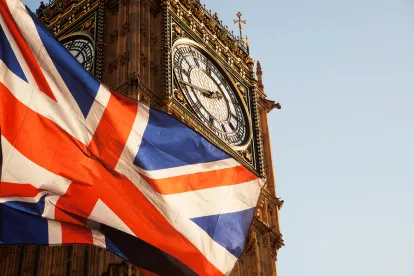Summary
- The threat of no deal Brexit on 29 March has been very substantially removed (but not entirely)
- The threat of no deal Brexit at some point in the future is still there, but remains small
- Brexit will almost certainly be delayed, at least until May / June
- The current withdrawal deal may still get through – if not, a longer delay leading to a “softer” Brexit with closer alignment to the EU is most likely
- Determining the future EU-UK trade relationship remains heavily dependent on arrangements over the Irish border
- These will form the baseline for all other UK trade relationships, including the UK-US FTA
“Confusion now hath made his masterpiece” Shakespeare: Macbeth Act II, Scene 3
What has happened?
- Monday 11th: Theresa May made a late night dash to Strasbourg to meet Commission President Juncker, and returned with what she said was a legal improvement to the Irish border backstop, making it easier for the UK to withdraw.
- Tuesday 12th: Early hopes that momentum could build towards the vote on the PM’s withdrawal deal were dashed when her colleague the Attorney-General published his advice: while the PM had secured stronger exit rights in the event of demonstrable bad faith by the EU, the improvement secured by the PM did not change his core legal advice on the risk of the UK being “trapped” in the backstop.
Parliament voted by 391 votes to 242 (a majority of 149) to reject the PM’s withdrawal deal: a significant improvement on the historic 230 majority against on January 15th (39 MPs switched sides, including some prominent Brexiteers), but still one of the largest majorities against a Government proposal.
- Wednesday 13th: Parliament debated a Government motion to rule out a no deal Brexit, but also noting that no deal remains the default in the absence of a deal, which was then amended (by a majority of 4 votes) to rule out no deal in any circumstances, turning the Government against it. The amended motion passed by a majority of 43 (321 to 278) with a number of Ministers abstaining rather than voting against. The motion has no legal force, but is a strong expression of Parliamentary opinion which the Government cannot simply ignore.
At the beginning of the day, the Government published its tariff plan for a no deal Brexit (87% of imports to be tariff free) – produced with minimal consultation of business – and its plan for the Irish border (which could be charaterised as a combination of smugglers’ free-for-all and an honesty box so unobtrusive and far from the border as to give no offence)
- Thursday 14th: Parliament debated a Government motion to request an extension to the Article 50 timetable until the end of June, so long as Parliament has approved the Brexit deal, or if Parliament has not approved the Brexit deal the Government will need a longer extension, thus requiring the UK to participate in the European Parliament elections in May. The motion was approved (412 to 202 votes) after a number of amendments failed, including one (by just 2 votes) which would have given Parliament the power to hold a series of indicative votes on alternative Brexit models, and one (by a wide margin) calling for a further referendum.
What happens next?
According to the Government’s plan, the withdrawal deal will come back for a further meaningful vote in the first part of this week, if it looks as though it could pass at the third attempt. If it passes, the Prime Minister will then ask the European Council meeting on 21st March for a short extension to the Article 50 exit date (29th March), to enable legislation and practical arrangements to be put in place. It is likely that this will be agreed. There is some debate about how long this could be – legally, if the UK is a member of the EU still on 23rd May, it must participate in the European Parliament elections. But the Parliament does not convene until 2nd July, so the UK’s failure to elect MEPs will have no practical effect until then. A strict interpretation would limit an extension to 22 May, but the EU may judge there to be no risk to any challenge to the validity of the Parliament so long as the UK is no longer a member by the time the Parliament convenes.
“The report of my death was an exaggeration” Mark Twain
The Government’s plan of course relies on Parliament reversing majorities of 230 and 149 against the PM’s withdrawal deal. The withdrawal deal has been pronounced dead by numerous MPs and commentators, but it is proving remarkably resilient. It still looks a long shot for it to be approved next week. A number of Brexiteers have already said they will never vote for it (though the 80 or so European Research Group – ERG – members who have formed the core of pro-Brexit opinion in the Conservative Party had already started to crumble at the last meaningful vote: it is not clear how many die-hards there are: at least 20). Opposition parties will oppose it, but a number more Labour MPs from Brexit voting constituencies may switch to support it (only 3 did last Tuesday). The Government is deep in talks with the Northern Ireland DUP, and if it succeeds in bringing them round a good number of the ERG will follow. The ERG will also have noted the strength of the anti no deal vote, and the closeness of the vote on indicative votes: both point to a softer Brexit if Parliament succeeds in taking control. And the Attorney-General is reported to be looking again at his legal advice. So if the DUP comes on board, and enough Labour MPs vote for the withdrawal deal to counteract the die-hard ERG MPs, it could just work.
If it doesn’t, the Government’s final final shot will come in the week after the European Council (ie. the week at the end of which the UK is due according to UK and EU law to leave the EU), their hope being that the conditions the EU puts on the longer extension to Article 50 (possibly 2 years), combined with the requirement to participate in European Parliament elections, will be such as finally to create a majority to leave on the basis of the PM’s withdrawal deal.
So where does it all leave us?
Parliament has asserted itself, but has not yet succeeded in taking control. The Prime Minister’s authority in her Cabinet, party and Parliament has been seriously – perhaps fatally – eroded. This week saw four Cabinet Ministers defy a three-line whip and keep their jobs, and a Cabinet Minister closing a debate with a strong argument to Parliament to support the Government’s proposal for a realistic extension to Brexit and then voting against it himself. But the Prime Minister’s withdrawal deal could yet just make it, which is extraordinary given the near universal opposition to it – as Frankfurter Allgemeine Zeitung put it, the coming week will determine whether it is a zombie or a phoenix. A request to extend the Article 50 timetable looks virtually certain.
A short extension (to May / June) could be used to put in place the necessary legislation to implement the PM’s withdrawal deal. Some alternative forms of Brexit could also be achieved within a short extension. Others, including a further referendum, would certainly require longer. The EU of course has to agree any extension (a unanimous decision of the 27 remaining member states), and can impose any conditions it wishes. A veto by one member state would leave us with an unchangeable Brexit date of 29th March (unless the Government revoked the Article 50 notice altogether), and a choice for Parliament between the withdrawal agreement and no deal Brexit.
The question now for British Parliamentarians is really whether you try to define what the future relationship between the UK and the EU before exit or after. There has been much focus on the lack of unilateral withdrawal provisions from the Irish border backstop. But the lack of unilateral ability to withdraw from or radically deviate from the Good Friday Agreement is the underlying determinant (and no British politician would argue that the UK should go back on the GFA). The GFA does not require there to be no hard border, but there is much argument that the re-establishment of hard border infrastructure would mark a strongly regressive step in the implementation of the GFA, and as such would be incompatible with the GFA. Hence the UK Government’s rather preposterous no deal border policy: you simply leave the border wide open.
The conundrum for the Brexiteers is that leaving the future relationship undefined (as the PM’s withdrawal deal effectively does) gives the EU a veto over the future relationship because of the Irish border backstop, which the Brexiteers fear the EU will use to force the UK into a customs union. However, given the (now clearly visible) direction of Parliamentary opinion defining the future relationship in advance is likely to lead to closer integration with the EU than the Brexiteers would want. The Brexiteers favour a relationship along the lines of the EU-Canada FTA, but this would need a very high degree of regulatory and tariff alignment in order to minimize the Irish border impact. Labour argues for a renewed customs union, which would constrain the UK’s ability to run its own trade policy. Pro-European MPs favour the European Economic Area (Norway) – EEA, which would raise questions about the point of Brexit (Norway’s position is best described as a waypoint on the way in, not an exit route). Increasing focus is being paid to a cross-party model called “Common Market 2.0”, which would involve the UK going into the European Free Trade Area – EFTA (ironically founded by the UK in 1960). EFTA currently has four members, three of which (Norway, Iceland and Liechtenstein) are members of the EEA; Switzerland is not. In fact, if Parliament could agree the future direction quickly, the adaptations to the current withdrawal package need not take very long: the Withdrawal Agreement would remain; the Political Direction on the future relationship would be amended, and by doing so provide a pre-agreed route out of the Irish border backstop. If that is a pre-existing structure (EEA or EFTA) there would be much greater comfort about sorting out the details later. If it is a wholly new FTA, there is much more uncertainty and hence in the mind of the Brexiteers scope for the EU to leverage its strength and veto over the route out of the backstop.
Parliamentary tactics will play their part too. The relatively small number of Brexiteers who favour a no deal Brexit could calculate that if the PM’s deal does not pass before the European Council and the Government brings it back for a final attempt on 25th March, they would be able tactically to frustrate the process necessary to change the 29th March leaving date in UK law, and thus force a no deal Brexit (changing the Brexit date in UK law requires a Statutory Instrument – proposed by the Government – to be approved by both Houses of Parliament).




 />i
/>i

